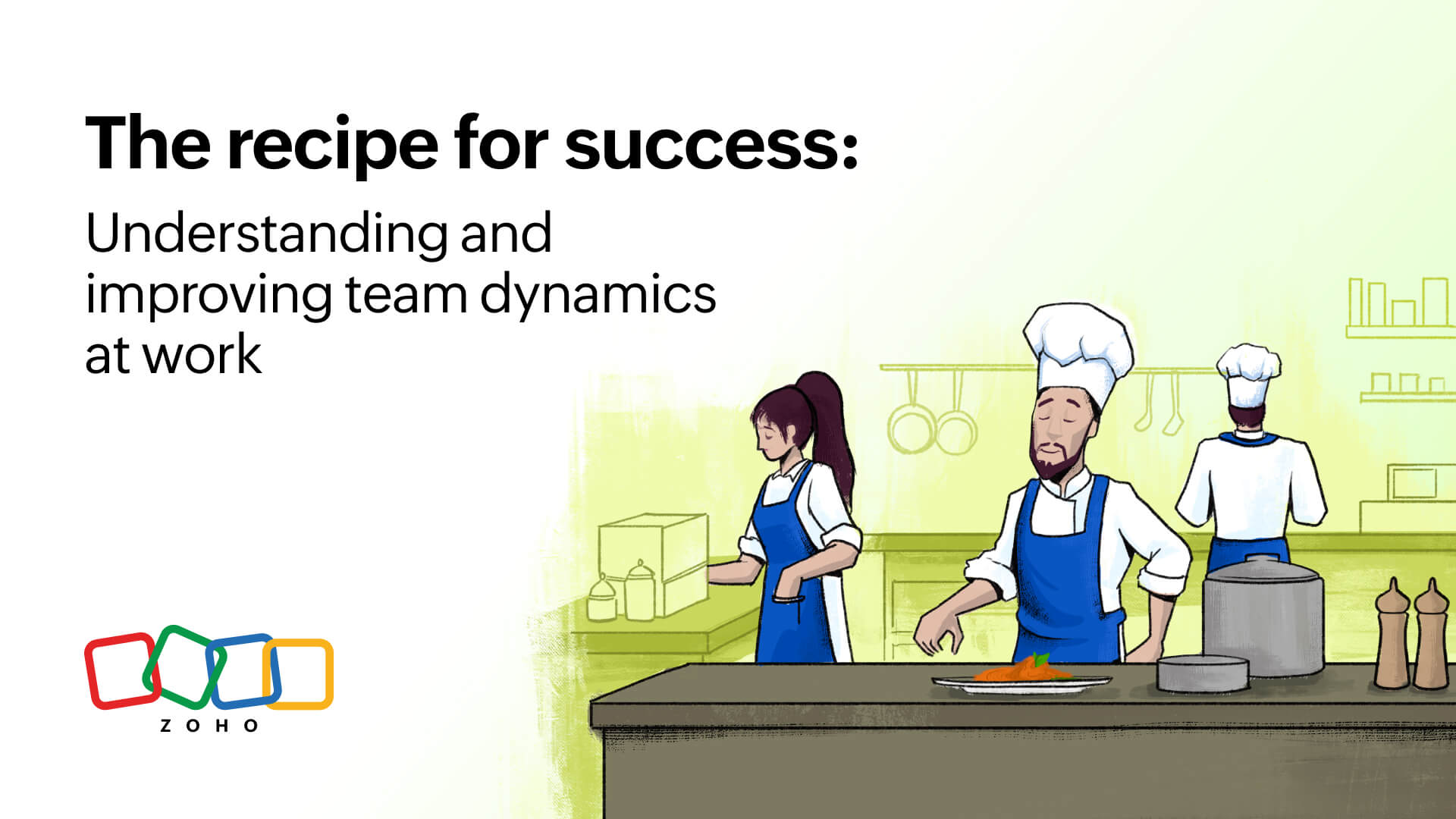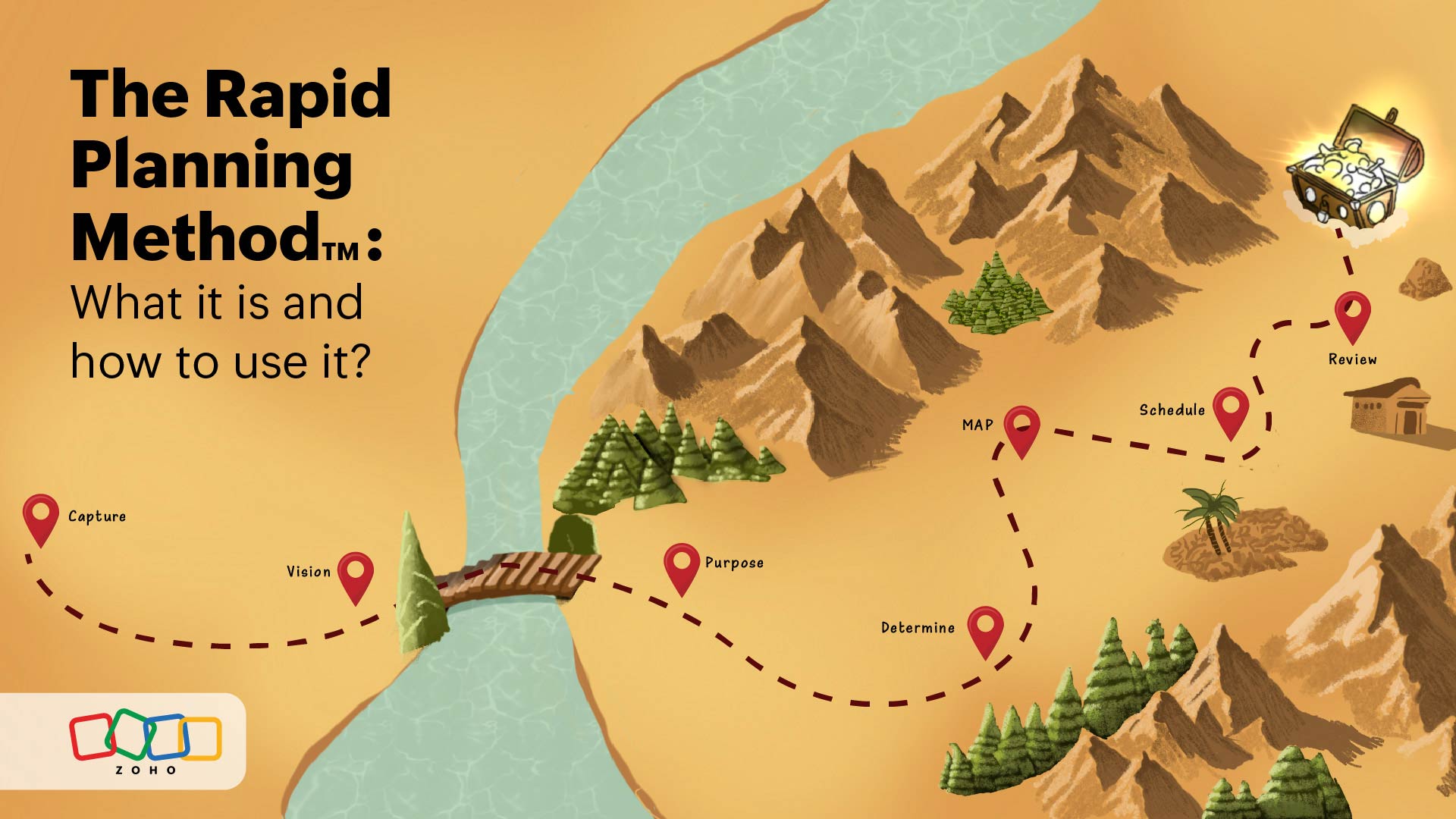- HOME
- All Topics
- Productivity in the workplace
- The recipe for success: Understanding and improving team dynamics at work
The recipe for success: Understanding and improving team dynamics at work
- Published : November 26, 2024
- Last Updated : November 26, 2024
- 142 Views
- 5 Min Read
Imagine a team of cooks in a busy kitchen in a restaurant. They're all busy doing one task or another—chopping, sautéing, stirring, plating. They all have their own station and specialty—one handles the appetizers, another takes care of the main course, and someone else does the desserts.
Now imagine you're dining at this restaurant. You place an order for a three-course meal. What if there's a delay for the appetizer to get ready? Or the person making the pastry doesn't know how many to prepare? The kitchen would slowly descend into chaos, and, eventually, your dishes will land on your plate late or won't be as tasty.
This is a vivid example of team dynamics in action. Each chef, in spite of possessing a unique skill, relies on the others to complete the meal. Only if they work in perfect coordination can they create a delightful dining experience. Without careful teamwork and constant communication, orders will be delayed, dishes will be ruined, and you will end up leaving disappointed.

Much like in the kitchen, the “recipe” for success in any workplace depends on team dynamics. Whether it’s a kitchen or a corporate office, understanding team dynamics is essential. Team dynamics aren’t just about having the right mix of skillsets. They’re more about how people connect, communicate, and collaborate.
In today’s workplace, teamwork is the core of nearly every project, so learning and adhering to effective team dynamics is a key to success. It shapes the way a group functions, how quickly it adapts to changes, and how successfully it achieves its goals. Understanding team dynamics is essential for both individual and collective growth, and this article will help you with this.
What is team dynamics?
Have you ever been part of a team that just “clicked” right from the start? Or, on the flip side, worked with a group that seemed to struggle with every project, no matter how simple? That’s team dynamics for you.
To understand this better, think of dynamics as the personality of a team. These are the unseen forces that influence how team members interact with each other, the roles they play, and how tasks are approached. It’s the collective “vibe” that emerges when people come together to achieve a common goal. Good team dynamics feel like the harmony in a band, where each musician knows their instrument but also tunes into the others to create beautiful music. Poor team dynamics, on the other hand, feel like that kitchen in chaos.
In practice, team dynamics impact everything from decision-making and problem-solving to motivation and trust.
Why does it matter?
To understand why team dynamics are essential, let’s meet Sarah, Dev, Prince, Anika, and Richard—a team of diverse professionals working together on a new product launch. As we go through each point, we’ll see how their dynamics affect their success.
Building trust
When the team first assembled, each member brought unique skills, but they hardly knew each other. Sarah, the team leader, encouraged open communication from the very first day, inviting everyone to share a bit about their background and what they hoped to bring to the project. When Dev faced a technical hurdle, he knew he could count on Prince’s expertise to guide him through it because they had built a foundation of trust.
Trust is the bedrock of effective team dynamics. The team members are more likely to ask for help, share ideas, and even take creative risks when they trust each other. It allows people to focus on the task at hand without second-guessing each other’s motives, making collaboration smoother and more genuine.
Improves communication
The team faced its first major deadline, and tensions ran high. In a moment of frustration, Anika and Richard had a miscommunication that nearly disturbed a key decision. However, because they had established a habit of discussing issues openly, they took a step back and clarified the misunderstanding. This saved time, and they realigned quickly to meet their goal.
Communication is the most important factor because it keeps everyone aligned. Clear and honest communication prevents minor issues from escalating. It helps solve problems efficiently and ensures that everyone is on the same page. When a team practices effective communication, each member feels heard and understood, and this in turn fuels progress.
Boosts morale
As the team neared the project’s midpoint, they were exhausted. They had put in long hours, and the workload was relentless. Sarah noticed this and organized a team lunch to celebrate the progress so far. She believed this would be a much-needed break and would ease the pressure a bit. She shared positive feedback from the client and reminded everyone of their shared goals. This lifted everyone's spirits and gave them a chance to refocus.
Morale plays a significant role in team dynamics. When team members feel valued and their hard work is acknowledged, they’re more motivated to keep going, even during challenging phases. Positive team dynamics create a culture where people feel recognized, which propels their enthusiasm for work.
Promotes innovation
A week later, the team hit a roadblock. The product wasn’t performing as expected, and everyone was stuck. But instead of panicking, they gathered for a brainstorming session to quickly discuss the possibilities. Each person felt comfortable proposing ideas—even the unconventional ones. Eventually, Prince’s out-of-the-box thinking led to a breakthrough that none of them had anticipated.
Innovation flourishes in teams with strong dynamics, and such teams embrace a “fail fast, learn faster” mindset. It helps people share their ideas boldly. When there’s a culture of open-mindedness and respect, team members are more likely to think creatively and offer solutions that might otherwise go unheard.
Increases resilience
The final challenge came as the project approached its launch date. There were last-minute changes, unexpected errors, and high stress. But because of the strong bonding and dynamics that Sarah’s team had, they didn’t crush under pressure. They supported each other, tackled issues together, and adapted quickly. When the product launched, it was a collective success, and the team celebrated the journey.
Resilience is a vital outcome of strong team dynamics. Handling setbacks and recovery becomes a cakewalk when people trust each other and feel supported. Resilient teams do face unexpected challenges, but tackle them without falling apart. This helps them to stay focused on the end goal.
Conclusion: Team dynamics is a constant journey
Just like a kitchen full of chefs needs coordination, communication, and clear roles to serve the perfect dish, your workplace too, needs healthy dynamics for the team to thrive. It requires consistent effort, mutual respect, and an environment that values each individual’s contributions. The journey to great team dynamics might have bumps along the way, but every small improvement adds up.
Remember, the real secret to team success isn’t about working harder but working better together. When your team clicks, everyone feels it—and so do the results.
 Anjana Balaji
Anjana BalajiAnjana is a passionate marketer who works for Zoho. Apart from the crazy movie buff that she is, she's also a trained musician and a creative home-chef!











